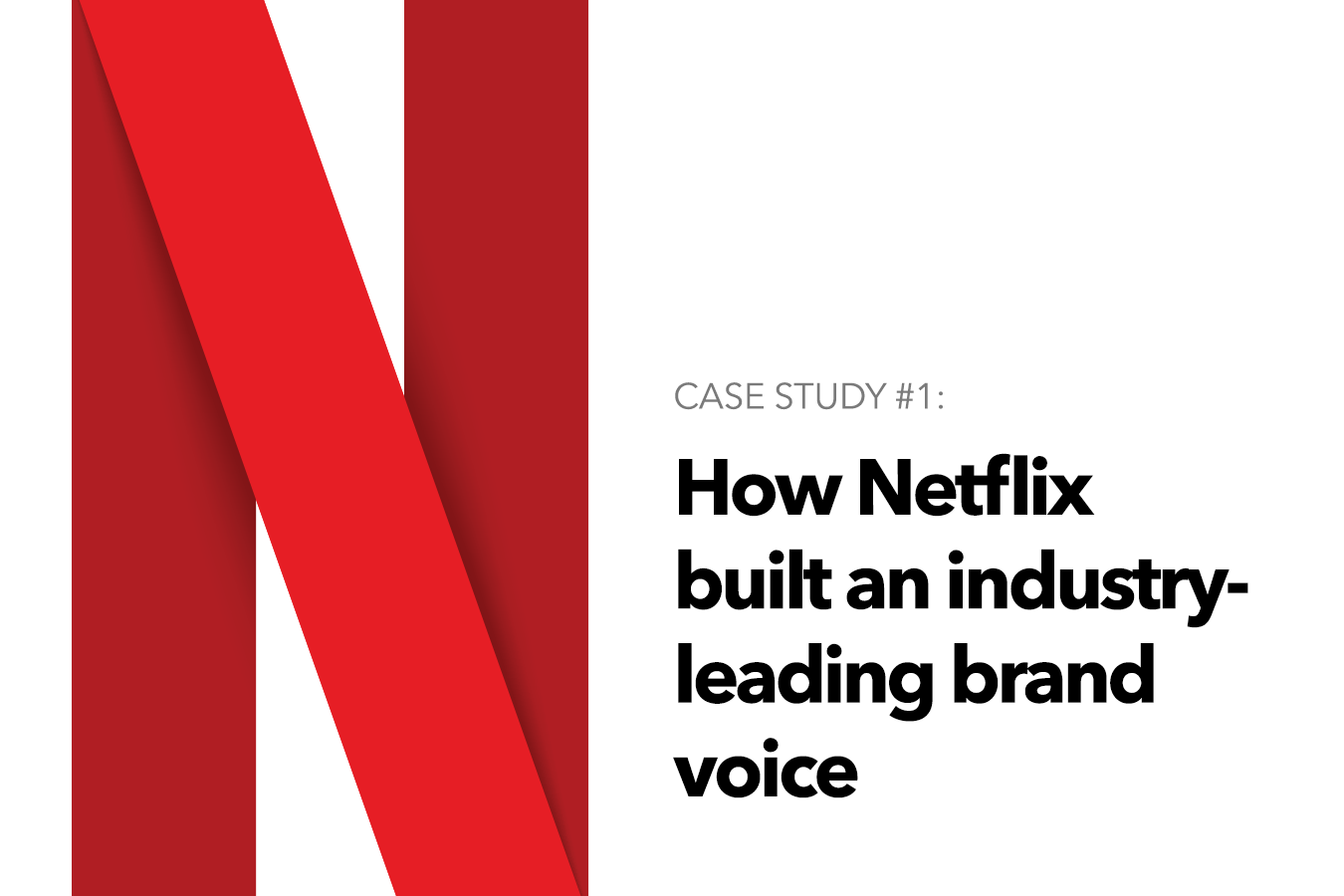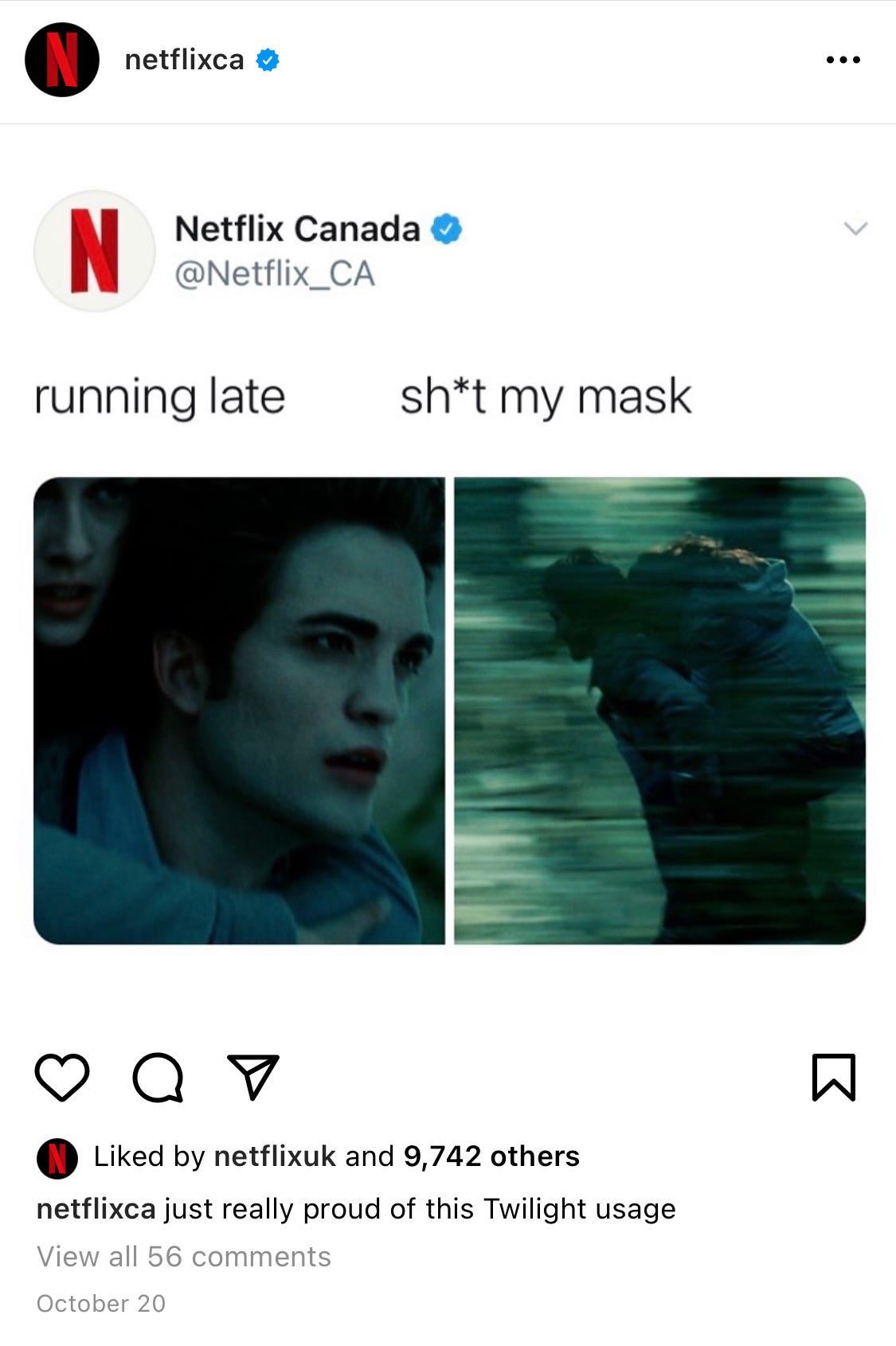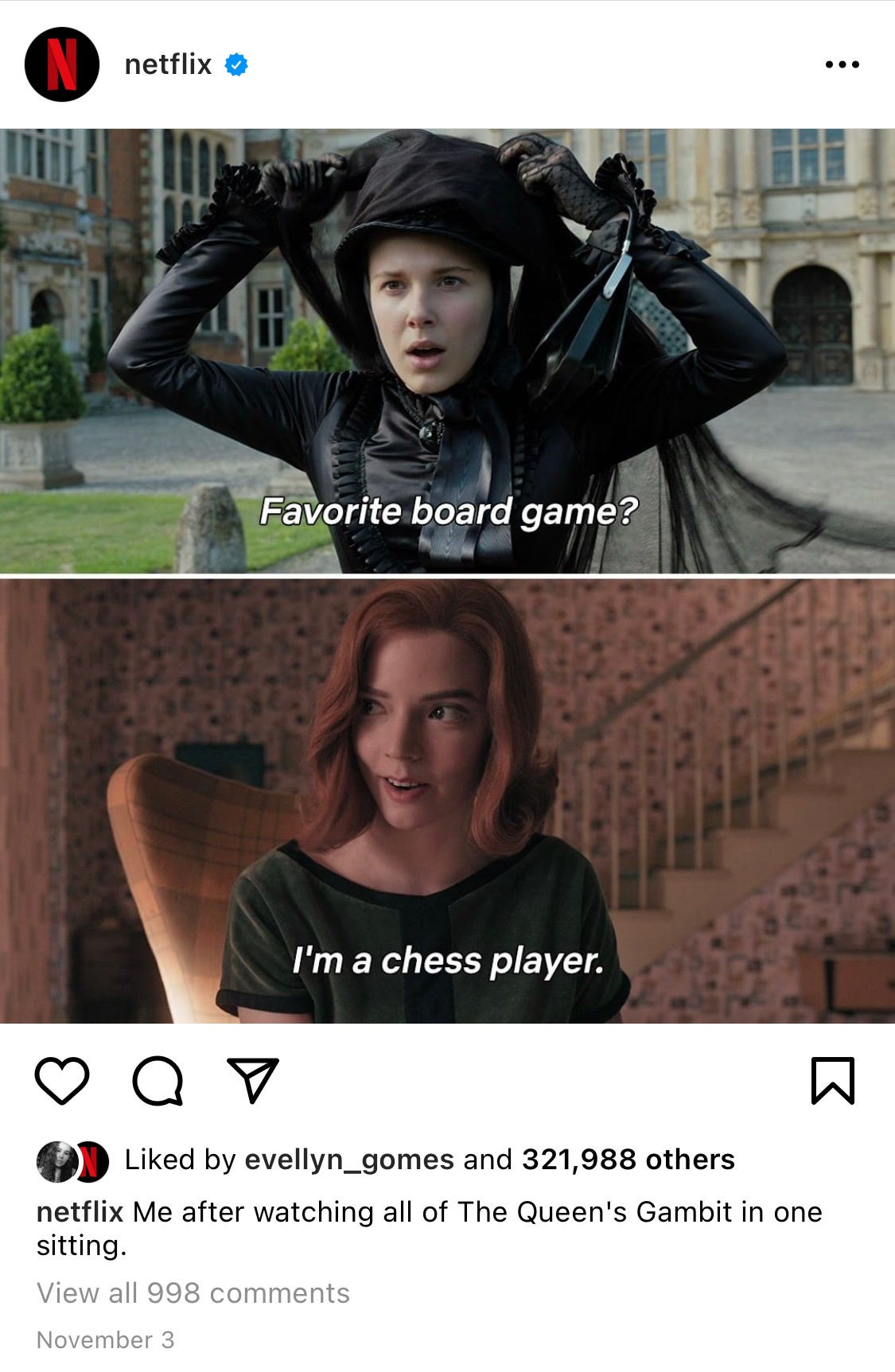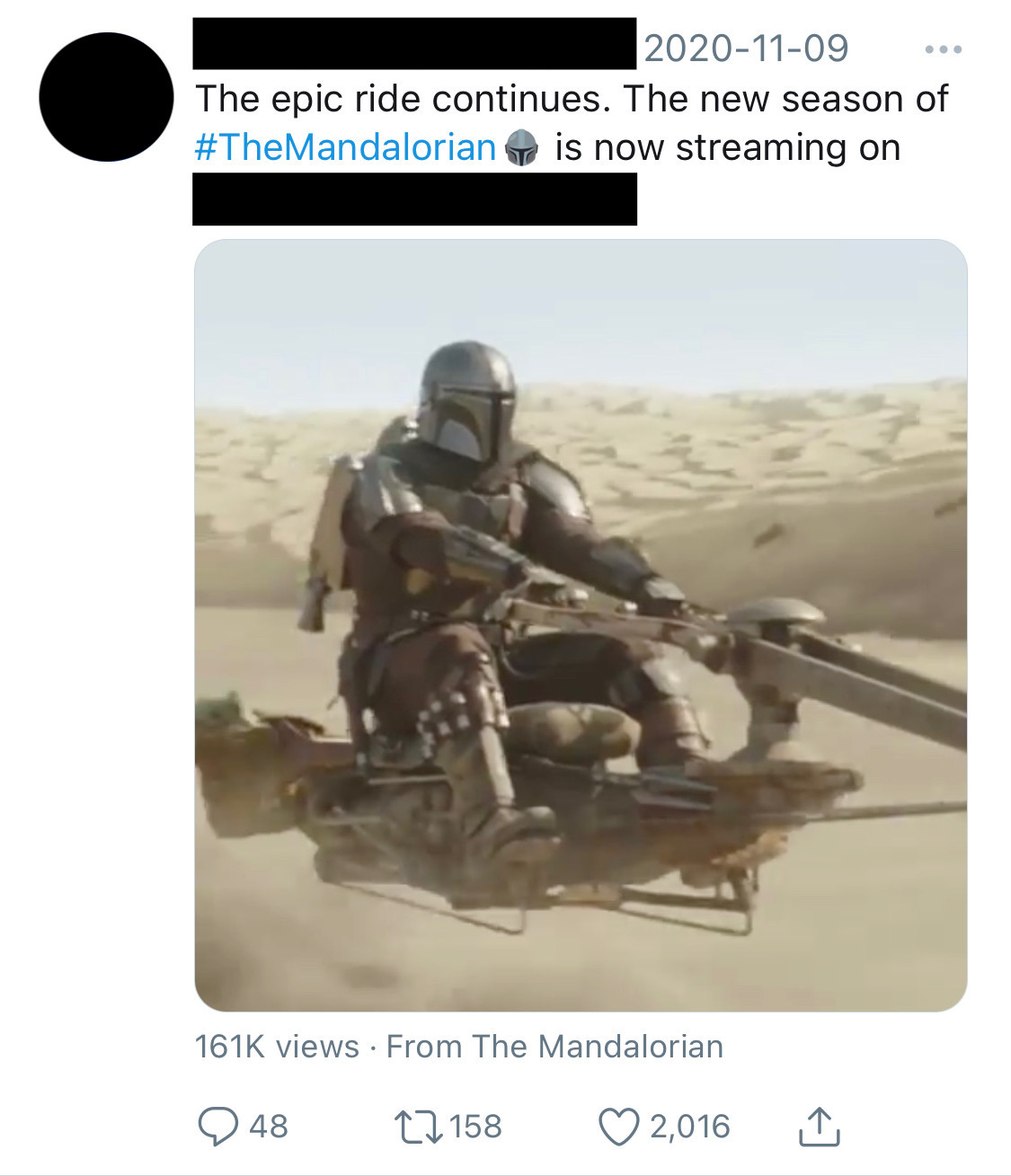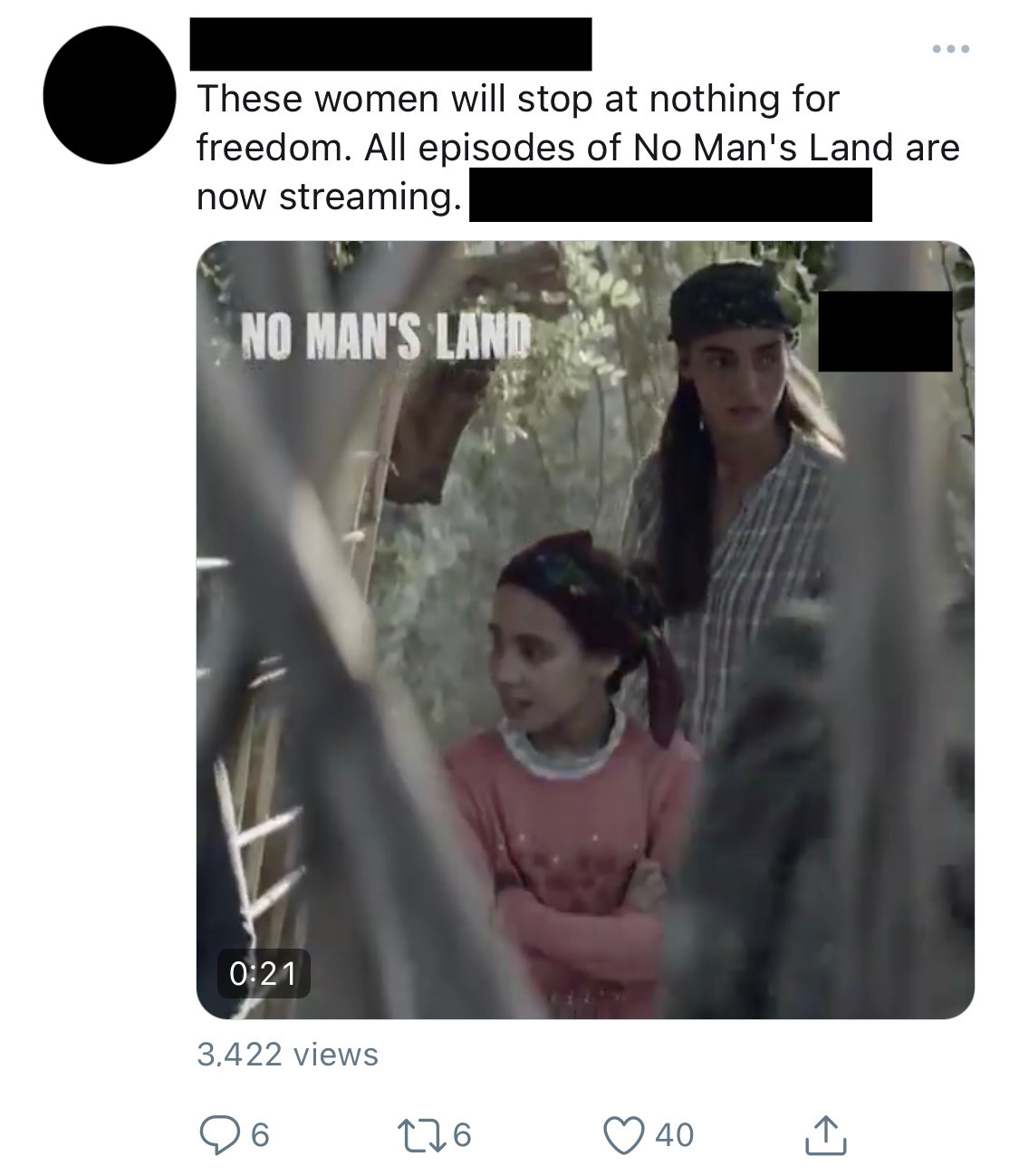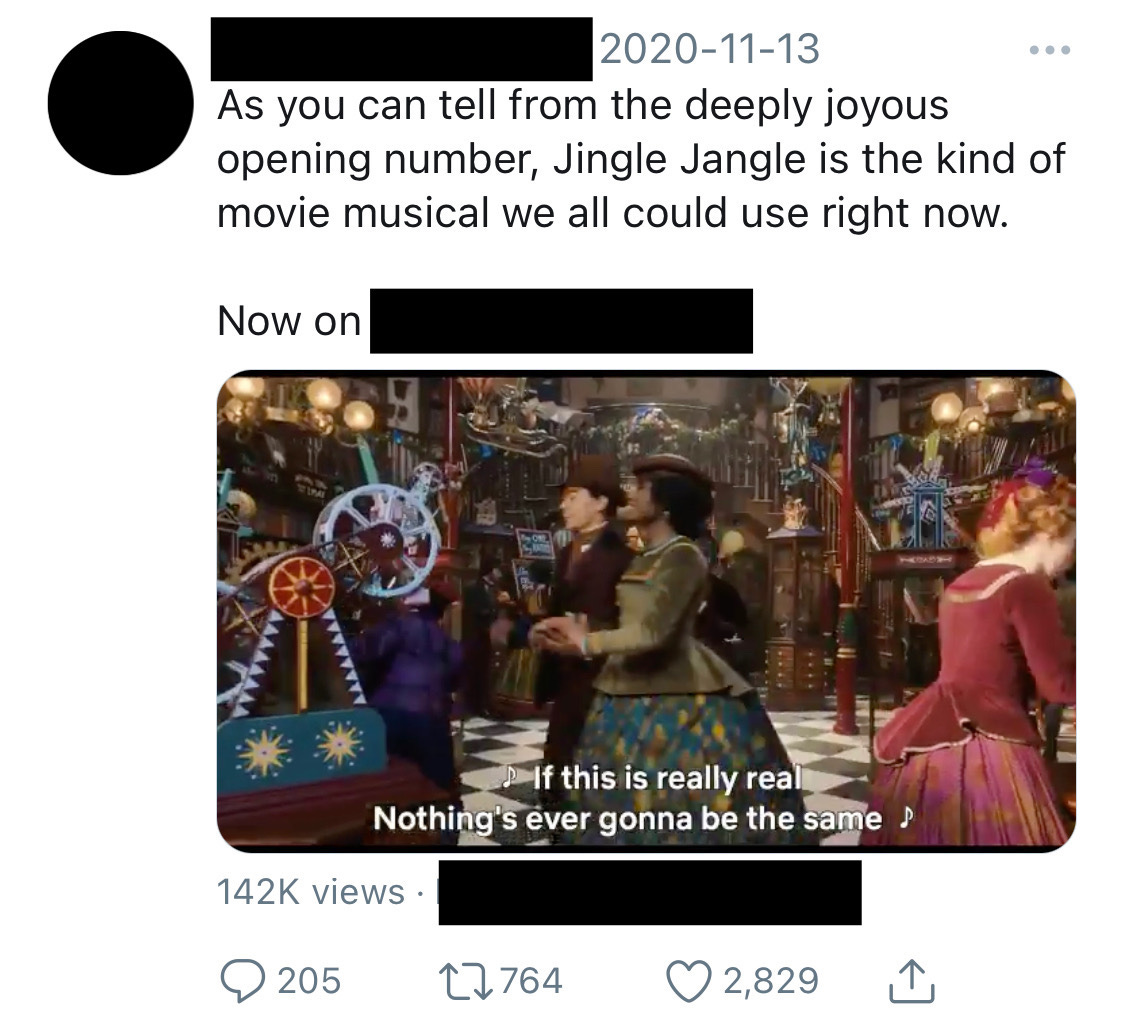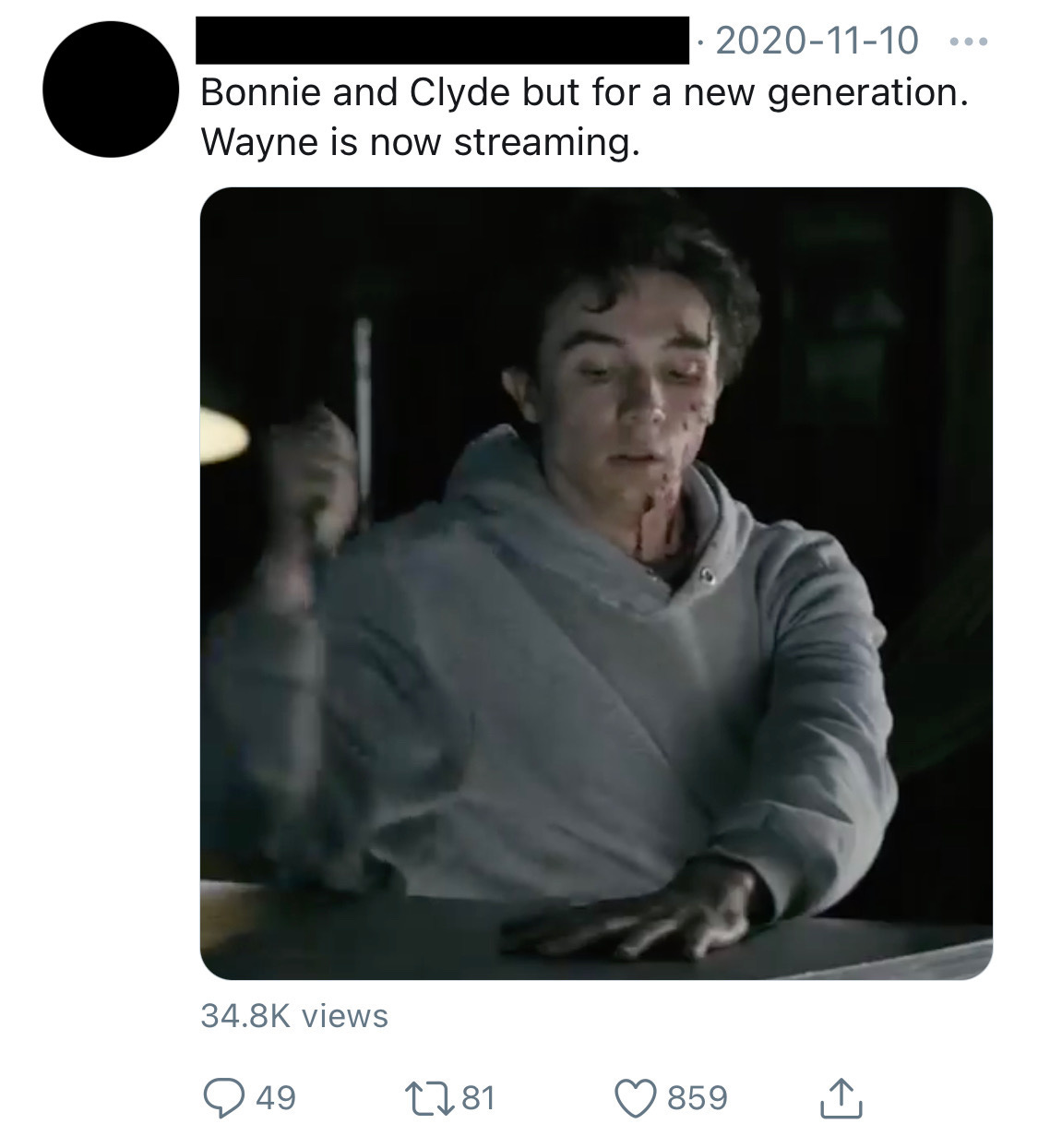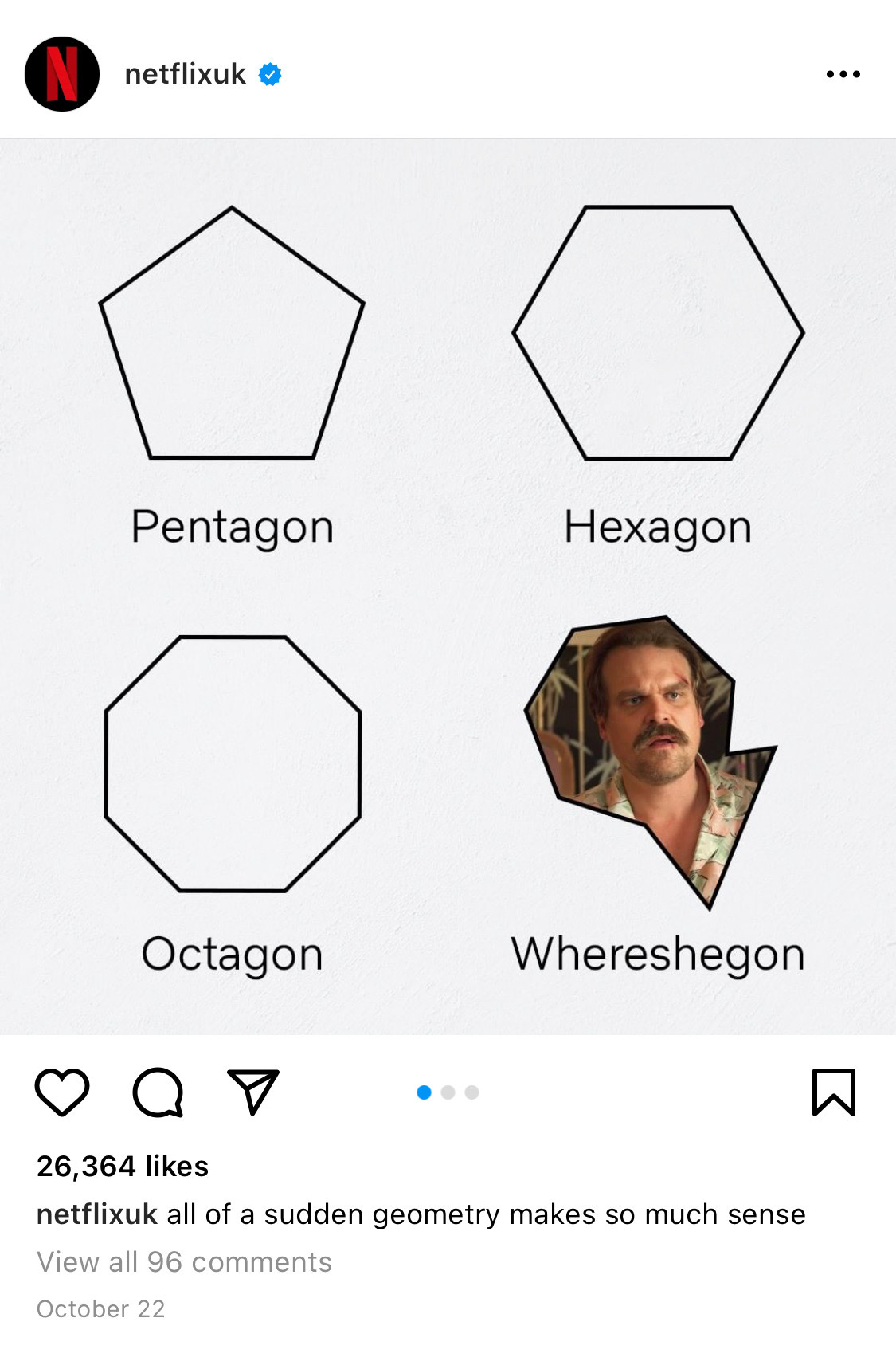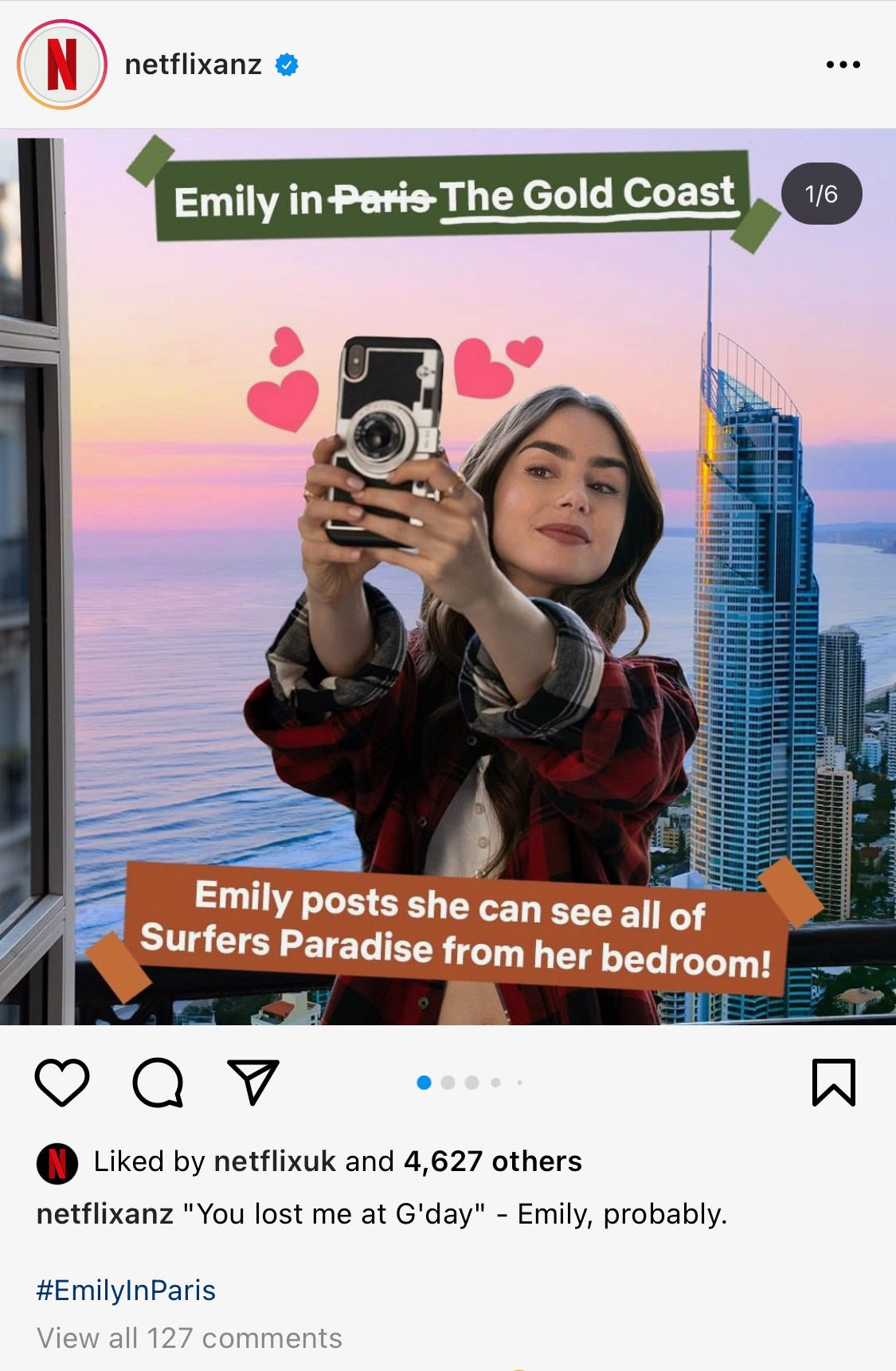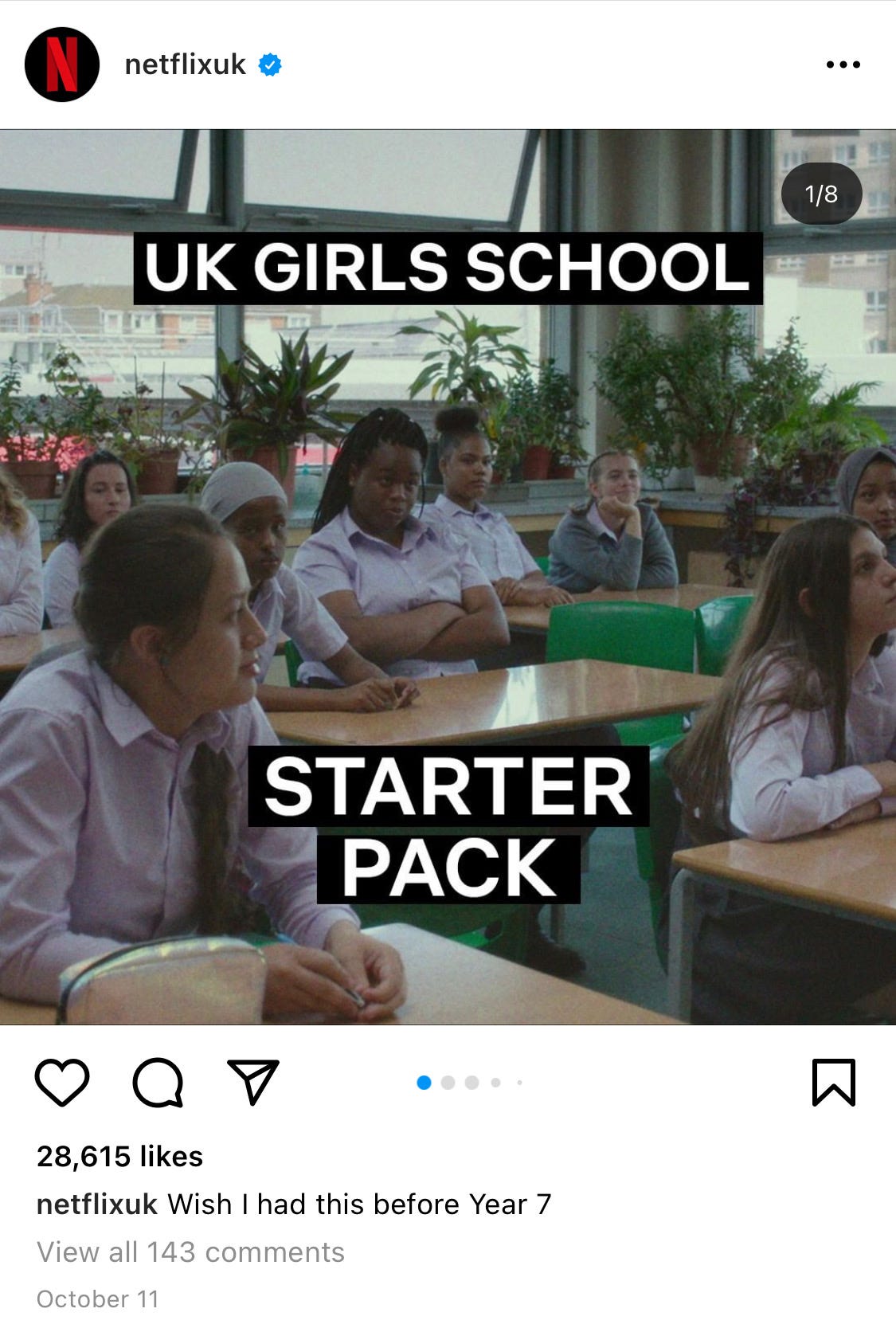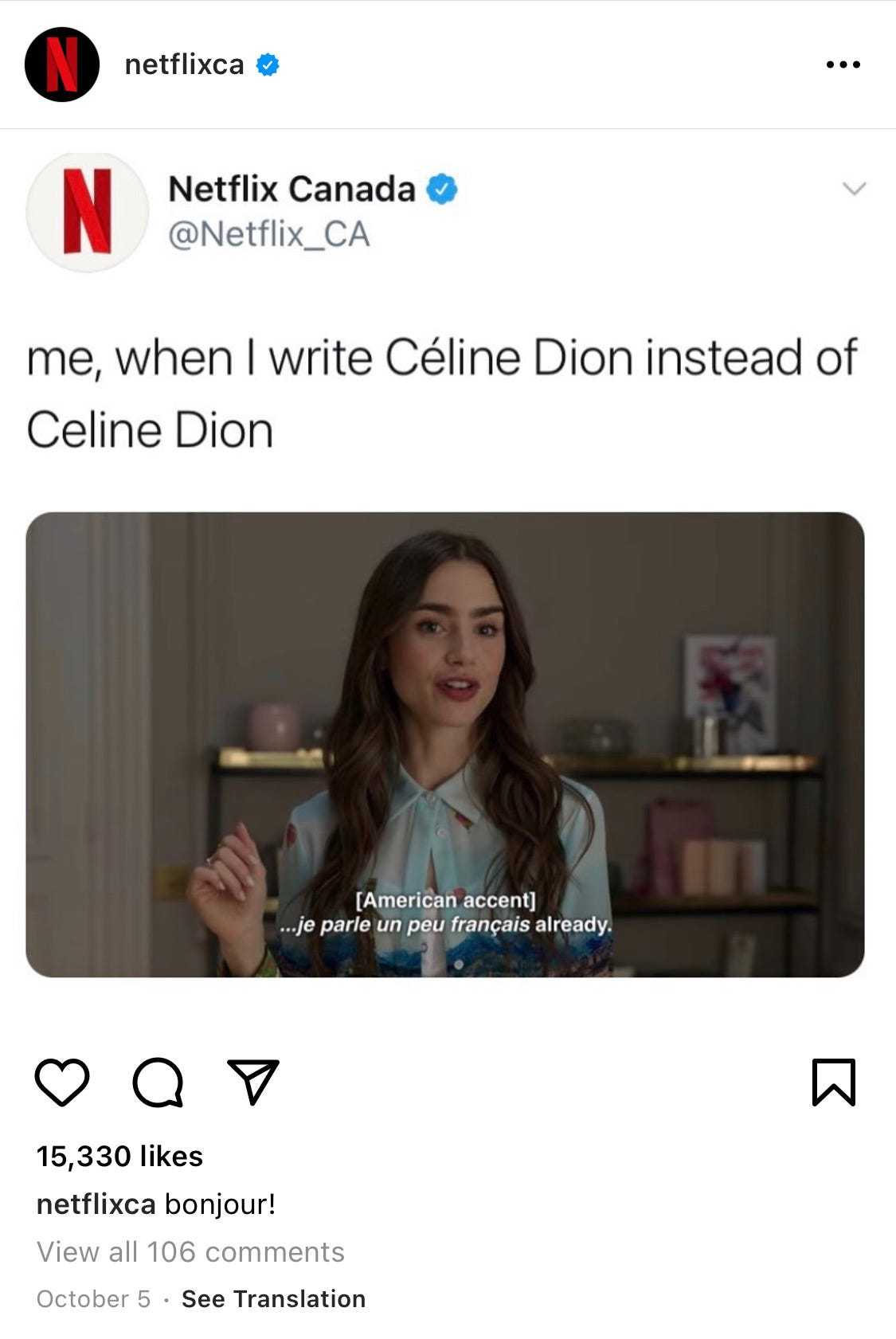#1: How Netflix built an industry-leading brand voice
I break down what makes Netflix's social accounts so engaging.
Question: What's the last brand to which you replied on social media? (By this I don't mean the last brand you complained to on Twitter in hopes of getting a refund - but rather the last time you commented on a brand's Instagram post or saw a brand tweet and replied to/quote tweeted it)
I went through my own tweets and - I swear I didn't plan this - the last brand I replied to was Netflix. In fact, I sent one of the 9,600 replies/mentions that Netflix received on Nov 11th alone. Sure, half of the mentions that Netflix gets is about renewing "Anne with an E" (please note that this is the first time anyone has actually cared about Canadian history), but the other half is because Netflix has a brand voice worth replying to.
For social media managers, it's almost intuitive why having a good brand voice matters for your brand's social channels: it can help drive engagement, attract new followers, and make your audience pay more attention to everything you post, including brand & promotional messages. What's less intuitive is exactly how to craft a good brand voice. It's not as simple as being sassy and posting memes - it's about knowing your audience first, developing a human voice that reflects your brand, and being consistent with it over time. So, how has Netflix crafted an amazing brand voice?
1) Netflix developed their voice with their audience in mind
Ultimately, your brand voice isn't about your brand, it's about who your brand is talking to. The biggest trap to avoid is forming it based on your own personality or your own opinion of what it should sound like. Remember, you are not your customer (regardless of how much you relate to the product or fall within the target market).
Netflix has done a great job of recognizing who they're talking to and crafting a voice that resonates with that audience. Their target audience is less about demographics, and more about frame of mind - after all, they have a global audience that spans all ages, locations, languages, and so on. But, that audience shares the same characteristics when they're watching TV: they're relaxed, not in a serious mood, and looking to be entertained. The tone of their brand voice reflects that: it's informal, conversational, and humourous. With each post, Netflix knows they're talking to stans, existing customers, or pop culture aficionados who just want to be in-the-know, and as such, their tone varies from post to post.


Admittedly, Netflix has a bit of an unfair advantage when it comes to knowing their audience: they have crazy amounts of data about their subscribers, including demographics and watch habits. They know exactly who uses their product, their interests, their age range, where they're located, what languages they speak. And based upon viewing trends, they can design memes to go viral by posting them just as everyone is starting to watch the newest show or movie.
But, that doesn't mean other brands can't replicate Netflix's success if they don't have access to the same amount of customer data. Use your existing followers as a starting point - go into Facebook Insights and Twitter Analytics to get basic demographic data. Even better would be researching your customers, be it through surveys, external market research, or customer interviews. In most companies this already happens outside of the social media team, so all you need to do is reach out to your customer success or sales team to see what customer data you can use to build your brand voice.
💡 Key takeaway: Before creating your brand voice, research your brand's target market on social media. Which (brand) accounts do they follow? How do those accounts write/sound? How do they interact with these accounts? Take cues from these accounts to build the foundation for your own brand voice. Your voice should also reflect the demographics and interests of your audience - brands that want to appeal to Gen Z should sound very different than brands targeting Millennials/Boomers or other groups.
2) Netflix sounds like a real person with an authentic personality
The first step in building a brand voice is defining your brand's personality, just as you would for a person: what traits does the brand have? Humour/snark/sassiness is an easy go-to on social media, but it doesn't work for every brand - it depends on your product and customers. For example, humour definitely feels more appropriate for B2C brands than B2B brands. It also doesn't make sense for official organizations like governments, political brands, non-profits, and law enforcement. That's not to say those kinds of brands can't ever be humourous in their posts; just not 100% of the time.
In Netflix's case, humour works. They sound authentic when they create memes and crack jokes because that's what their community is already doing, so it feels natural for them to join in. The other end of the scale is when brands try too hard to "fit in with the kids" and create memes or use internet speak like "yolo" and "bae", which is when they end up being ridiculed on r/FellowKids. I'm sure Netflix's team is far more self-aware than to use terms like that.
Many brands these days go so far as sounding like the social media manager themself (rather than a corporate entity) - such as using "I" in post copy, and making personal comments that sound like they're coming from one person, not a company. It's easy for us to attribute success to this type of brand voice because it often gets high engagement, but going back to point #1, it should only be used if it matches a) how your target audience speaks and b) your overall brand (more on that in point #3). Netflix hits a home run on both of these points by shaping their brand voice to sound like a fellow superfan. Like other fans, their posts and captions express love and passion for their shows, characters, and even the actors. They behave like a friend who is always in-the-know about every new show. As such, it feels natural for fans to engage with the Netflix accounts just as they would with their friends.
💡 Key takeaway: Picture your brand as a person - how do they talk? Who are they friends with? Who do they talk to (aka other brands)? How old are they? What do they like/dislike? Use these questions to define your brand's personality and craft a "tone of voice" guide for your social media team to use.
3) Netflix's brand voice is ownable
Consider the following tweets from different streaming brands, announcing new show launches:
I redacted the account handles, but I bet you can still guess which one is Netflix, right? That's the power of an ownable brand voice.
Netflix's voice is unique - especially in a market where the product is basically the same across all streaming platforms, Netflix's voice sets the brand apart from its competitors by being bold, entertaining, timely, and culturally-relevant. It's relatable - Netflix's posts are something you'd share with your friends, family members, or coworkers, especially if it's about a show you both watched. Lastly, it's entertaining - I always hit "read more" on Netflix's Instagram captions and swipe through their carousels because I've enjoyed or related to them in the past, so I know they're worth engaging with. Moreover, Netflix does such a good job of being entertaining that they don't need to be overly promotional - through sharing memes, quotes, clips, and inside jokes from shows, Netflix's social accounts are just as entertaining as its TV & film content. And this reflects Netflix's overall marketing objective: to get people so excited about its shows & films that they sign up and watch.
The good news for social media managers is that you don't have to create a brand voice from scratch if you're lucky - you can use existing brand documents (such as the brand's mission, values, personality, and/or product & copywriting guidelines) as a starting point, and adapt it for social media (make it more conversational and informal) and your target audience.
💡 Key takeaway: Don't copy what your competitors are already doing on social. Your brand voice is a great opportunity to set your brand apart from competitors in your customers' minds. Use your brand's existing guidelines as a starting point for your brand voice, and adapt it appropriately for social media platforms by making it more conversational and appealing for your target market.
4) Netflix keeps its voice consistent
Netflix has dozens of accounts across Twitter, Instagram, TikTok, among other platforms. Yet, they all still sound like they're written in the same voice. That is an incredible feat, given:
they write across multiple languages - and given their predominant tone is humour, what's funny in one language may not translate to another. Yet, this tone is what gives the brand a consistent feel across all of its regional accounts. @NetflixFamily is just as funny as @NetflixUS. It also gives all of the Editorial & Publishing regional leads a unified direction to follow for their social media strategies.
they write across multiple markets, even in English - take Instagram, for example. Netflix has regional accounts for the US, Canada, UK, and AUS/NZ. Yet each account has its own slightly different tone - it's not dramatically different, but the jokes and content are clearly tailored for each market (imagine posting an American punchline in the UK...).
they write across accounts with different audiences and purposes - Netflix has sub-accounts for genres such as @StrongBlackLead (Black-led content), @NetflixIsAJoke (comedy), @NetflixFamily (family-friendly), and more. Understandably, each account's tone is adapted for its audience; when @Netflix and @StrongBlackLead post about the same new TV series, they use different words and expressions that reflect the language and nuances of their communities. However, despite having slightly different tones, they all deliver the same content: what to watch on Netflix, in their own sassy/snarky/humorous/self-referential way.
Along with consistency across languages & accounts, Netflix has also kept its brand voice consistent over time. The transition to their current brand voice started in 2015, and since then they've slowly built their army of meme-generating, viral-tweeting, self-congratulatory social accounts. While Netflix's humour may not be everyone's cup of tea, I think any social media manager can respect that they decided on a brand voice and stuck to it. And it works for customers, doesn't it? I know I follow their accounts to a) know about new releases to watch (driving a valuable user behaviour), and b) be entertained, which is exactly how I would define success for Netflix's social media strategy.
💡 Key takeaway: Building a brand voice is a long-term investment. The longer you use and develop it, the more your audiences will grow to recognize and embrace it. And if your brand has multiple regional accounts, do more than just translating your content for these accounts - make sure your brand voice is also kept consistent, albeit adapted for each market's cultural nuances.
So, to sum up: why should brands care about having a strong brand voice on social?
It can attract more followers (and retain current ones)
It can drive engagement (and make your followers care more about everything you post, including brand & promotional messages)
It can build brand distinction (especially in an undifferentiated or hyper-competitive market)
Developing a strong brand voice doesn't happen overnight. It takes time to research your customers, decide on a voice, then test and iterate it with your social audience. But once you do, it'll make your life as a social media manager that much more rewarding - it allows you to interact with customers and other brands; it gives you/your team a strong strategic direction to follow; maybe it'll reduce the number of complaints you get in your mentions and comments (which is my only wish for every social media manager).
Have any feedback on the case study? Reply to this email or comment below - I’d love to hear your honest thoughts, good or bad, to help me improve future emails. If you found this case study useful, please support me by sharing it with a friend, co-worker, or aspiring social media pro 👇




